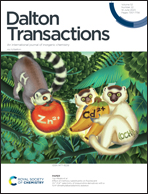A ductile and strong-affinity network binder coupling inorganic oligomers and biopolymers for high-loading lithium–sulfur batteries†
Abstract
Lithium sulfur (Li–S) batteries have become the predominant energy storage devices of the future. However, the reasons why Li–S batteries have not been widely commercialized include the shuttle effect of polysulfides and the volume expansion of sulfur active substances. In this study, a binder with a stretchable 3D reticular structure was induced using inorganic oligomers. Potassium tripolyphosphate (PTP) has been used to powerfully connect the tamarind seed gum (TSG) chain through robust intermolecular forces due to the strong electronegativity of P–O− groups. With this binder, the volume expansion of sulfur active substances can be well restrained. In addition, a large amount of –OH groups in TSG and P–O− bonds in PTP can also effectively adsorb polysulfides and inhibit the shuttle effect. Therefore, the S@TSG-PTP electrode shows an improved cycle performance. When the sulfur loading is as high as 4.29 mg cm−2, the areal specific capacity can reach 3.37 mA h cm−2 after 70 cycles. This study highlights a new way for the binder design of high-loading sulfur electrodes.



 Please wait while we load your content...
Please wait while we load your content...